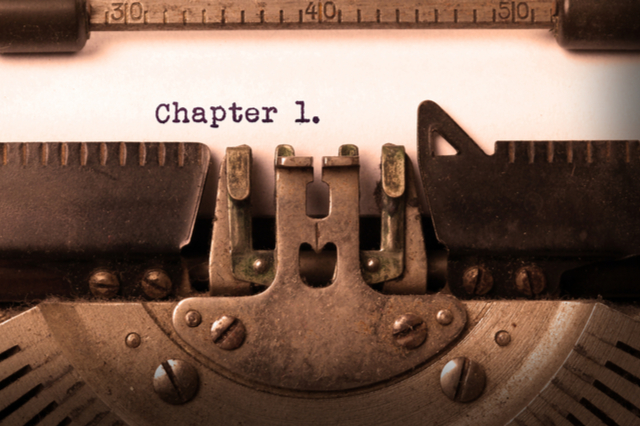
Why is it so important to get your novel opening perfect?
Writing a novel is a great achievement.
But the sad fact is, if your first few pages and chapters aren’t outstanding, the chances of anyone reading the rest of your book are slim.
It may seem unfair, but there is simply so much competition out there that you have to make readers feel compelled to choose your story over all the others, and you have to do it before they’ve invested too much time.
1) You need to prove you’re worthy of the reader’s time
Reading a novel is a significant investment of time. Time that a reader could spend doing something else, like watching TV, gardening, or reading a book by an author they already love.
So readers need to be convinced you are going to reward their investment. If you can’t delight, intrigue and touch their hearts in the first few pages, they will not trust that you’ll be able to do it at all.
This is amplified if you’re trying to get noticed by agents. For them, the potential investment is vastly greater and the stakes far higher. Agents have a very limited amount of time in which to make a judgement about your story, compared to the hundreds of others they get sent each week. So they have no choice but to make snap judgments. There literally isn’t time in the day to read every manuscript in full just in case the payoff is unexpectedly outstanding.
2) First impressions leave a mark
Another very important reason to take great care with your opening chapters, is that first impressions matter deeply.
If you clearly establish a character to be kind and generous in the first chapter, then the reader will often see them that way until the end, even if they don’t do anything kind or generous for the rest of the book.
Similarly, if you set a very creepy tone at the beginning, then the reader will read all the other words through the same chilling lens, even if they are perfectly innocent on the surface.
A painstakingly designed beginning will pay dividends for the whole book.
3) The beginning sets up the end
Similarly, the right beginning sets the foundations for a gripping climax. The conclusion of the book should be foreshadowed in the first scene, though of course the reader will have no idea how on first read.
Many stories ‘bookend’ the narrative, placing the main character in a situation in the climactic scene that mirrors the opening scene. Using this technique, the author can clearly demonstrate how the protagonist has changed.
It’s also common to introduce the central theme of the story: its underlying message. Whether the theme is ‘with great power comes great responsibility’ or ‘love leads to heartbreak’ or whatever, it should be evident in the opening chapters.
Exceptions to the rule
Of course, not all books start by grabbing you by the eyeballs. You will be able to find many examples of books that take a while to get going, and that have beginnings that plod rather than spring from the starting blocks.
Some of those books became classics before there was so much competition (there are around 34 times as many books published each year today than 100 years ago ). Others may be books written by already established authors. These writers have already built up a credit bank of trust with their readers, so have the luxury of being able to break the rules if they wish. Their readers already know their investment will be rewarded.
But if you’re trying to break into this highly competitive market for the first time, and you’re writing now rather than in 1800, you need to do everything you can to give your book the best start in life.
The rule of breadcrumbs
This is a simple but powerful idea that asserts that if someone likes the first breadcrumb, they will take a step towards the next one and give that a taste too.
If the reader likes your first sentence, they will probably read the first paragraph. And if they like the first paragraph, there’s a good chance they’ll keep going until the end of the first page. If they’re still convinced, they’ll read to the end of the scene, then the first chapter, and so on.
So you need to lay out a series of breadcrumbs that leads your reader into the depths of the story you’ve created, until they have no choice but to follow the path you’ve laid out for them until the end.
Look at each of these parts of your opening in turn, and try to work out whether there is enough in each incrementally larger subsection to entice someone to read the next. (Credit for this concept goes to Christopher Moore, via Chuck Wendig.)
Five goals for the first chapter
Now let’s get down to the nuts and bolts.
Below are five key objectives to focus on in your opening, with examples. Note that these items can and should overlap. If you can make a single sentence fulfill several of these goals, then it means your words are extra effective.

1) Grab the reader’s attention
If you saw a hippo wearing sunglasses walking down the street, you’d give it at least a second look, right?
Many authors ensure their readers aren’t going anywhere by grabbing their attention with something unusual or surprising.
Done right, this technique establishes to the reader right away that you are an author with a great imagination, who is going to delight them with things they can’t anticipate on the journey you take together.
Does your character live in a cupboard under some stairs, or in the Museum of Indian Rural Art? Is your main character a murdered teenager? Did their grandmother just explode? Or has the school gym been turned into a dormitory?
Examples from: Harry Potter and the Philosopher’s Stone, Aru Shah and the End of Time, The Lovely Bones, The Crow Road, The Handmaid’s Tale.
If you can make the reader do a double-take within the first few sentences and raise questions in their mind, you’re off to a good start. This doesn’t have to be in the very first line, but it will be all the more powerful if it is.
Check out this great resource analysing amateur writers' opening sentences.

2) Establish the setting
This is a basic requirement if you don’t want your readers to be confused.
By the end of the first page, the reader should know when and where the story is taking place.
If they’re still not sure whether it’s Ancient Greece or Outer Space they’re going to feel confused, and if they feel confused they’re not immersed in the story's world. After all, you’re the one navigating, and if they feel lost, they’re going to have doubts about continuing to follow you.
The facts of the setting don’t have to be spelled out specifically, e.g. “in 18th century France”, although this works if handled correctly. Time and place can be established through description of surroundings (courtyards, parlors, chamber-pots) style of writing ("a man who was one of the most gifted and abominable personages in an era that knew no lack of gifted and abominable personages") and names of the main characters (Jean-Baptiste Grenouille) or of other historical figures (de Sade, Bonaparte).
(Above examples are from the first few paragraphs of Perfume: The Story of a Murderer.)
Two more subtle aspects of setting are tone and genre. These are interwoven with time and place, and should also be established in the same way. The reader wants to know if this is the sort of book that appeals to them. Is it quirky? Serious? Gloomy? Creepy?
Whatever it is, they need to know within the first few pages, or preferably the first few paragraphs.
3) Make the reader care about the character
Making a reader care about a character is probably the most reliable way to keep them reading.
Here are a few techniques for building empathy with characters, drawn from Michael Hauge’s Writing Screenplays that Sell:
Undeserved misfortune
Showing a character suffering from undeserved misfortune makes our heart go out to them, because we can imagine ourselves in the same situation, and how we would feel.
Jeopardy
Similarly to undeserved misfortune, if we see a character under threat, we may worry about them. They don’t have to be hanging off the edge of a cliff by their fingernails, it could be that they are about to enter a job interview or stand up on stage.
Displaying a valued trait (e.g. good-hearted or funny)
We tend to like people who are kind and warm-hearted, even if they have many flaws. Likewise, we can’t help liking a character who makes us laugh, even if they are otherwise the most reprehensible rogue.
Displaying mastery of a skill
There’s something thrilling about watching someone excel at a skill. Whether it’s archery, reading poetry or playing guitar, when we see someone displaying a skill they have completely mastered, we admire them.
In touch with their own power
In a similar vein to being masterful at a particular skill, a character may have mastery over their own presence. People who aren’t afraid to speak their mind, and who don’t seem to worry about the opinions of those around them often leave us in awe while we wrangle with our own insecurities.
Exercise: note down everything the reader learns about your protagonist in your first chapter – and don’t cheat! Make sure you don’t note anything that you know as an author that doesn’t actually appear in that first chapter.
4) Raise gripping story questions
A powerful way to glue your reader to their seat is to raise questions in their mind that possess them so powerfully they can’t sleep until they know the answer. Human beings are naturally curious and generally like to be challenged.
But don’t mistake curiosity for confusion. When raising questions in the reader's mind, it is possible to fall into the trap of withholding information that simply confuses the reader.
Curiosity arises from wondering what’s going to happen next. Confusion arises from not understanding what’s going on now.

5) Introduce conflict
Conflict is what creates gripping stories, and keeps readers turning pages.
If your reader cares about the character, but that character is not facing any kind of conflict or threat, then the reader can comfortably go off and make a cup of tea without having to worry. But if that character is facing challenges, then the reader will need to make sure they’re okay before they can put down the book.
You may be familiar with the idea that before the true adventure starts, you need to establish the status quo – the character’s mundane, everyday life. So how do you open with conflict, when you’re trying to show your character’s mundane existence? By showing their everyday conflicts.
Challenges don’t have to be life-threatening. A good writer can have us on the edge of our seat over catching a bus, or finding a pair of glasses. So you don’t need to open with the character having to dodge a giant, spiky curveball (unless they’re Indiana Jones and actually do that for a living). You can show them facing frustrations that they deal with on a regular basis.
Perhaps they work in a job they hate with a leering boss and rude customers. Or maybe they’re trying to manage seven kids who are running rings around them.
By opening with minor catastrophes, you also leave scope for ever-increasing challenges and peril, which will eventually make these everyday conflicts look like small fry that they could gobble up in one gulp.
Other tips:
Prologues
A lot of people say prologues are a disastrous way to open a novel, to the point that if they see one, they refuse to read on. But of course it’s not as black and white as that.
There’s a good reason to be wary of prologues. They delay the start of the ‘proper’ story and in most cases don’t feature the protagonist (otherwise they’d just be the first chapter), which delays the opportunity to get the reader to care about them.
However, there is a time and place for a prologue. It can set the tone, raise story questions and intrigue and there’s no reason it can’t surprise and delight. So while you need to be sure you know exactly why starting with a prologue is better than starting with the story proper, there’s no reason to dismiss it out of hand.
Don’t overload the reader
It’s easy to try so hard to grab the reader’s attention, raise questions in their mind, confront them with an interesting character with conflicts and explain the setting – that they end up spinning.
That’s like trying to stuff the whole loaf of bread in their mouth at once, instead of giving them the breadcrumbs. Try to ensure you aren’t stuffing too many new concepts at them too fast.
It’s a difficult tightrope to walk, but your balance will get better with practice.
Get to the dialogue
Dialogue has immediacy and it is more likely to show the situation and character than a description. Getting into dialogue early is good practice.
Introduce or hint at the stakes
While you don’t have to spell out the higher stakes of the story in the first few chapters, giving readers a hint of what could be gained or lost by this character can be another hook.
Establish what the characters want and need
A part of empathizing with a character and needing to know what happens to them is knowing what they want, and wondering whether they are going to get it. However, what a character wants is often not the same as what they need – and finding out whether they get what they need can be even more compelling.
For example, a character may want to come first at the triathlon in the Olympics. But what they need is to feel loved by their family, whether they win or not. If you can make your reader care about the answers to these questions by the end of the first chapter, they will have a reason to read to the end.
You can read more about a characters want versus their need here: What Your Character Wants vs. What They Need.
Conflict is not the same as action
Assume that violence or physical conflict is naturally attention-grabbing. Certainly, if someone punches you in the face, it’s going to get your attention, but if the reader is going to care about someone getting punched in the face, they have to care about the person first.
Don’t start with backstory
The start is not the place for backstory.
End on a cliffhanger
Another powerful tool to wield is to end the first chapter with a cliffhanger. This could be a difficult situation you leave your main character in, or a question that is raised.
Cut the first chapter
If you’re finding it hard to get the story going, and find yourself feeling the need to fill your first chapter with exposition, a good technique can be to simply cut the first chapter. Does your second chapter work as the first? Is that where the action really starts? Is there actually enough information there for the reader to learn all they need from context?
Have patience and perseverance
The opening chapters are probably the hardest words of your novel to write – with the possible exception of the climax. Don’t be surprised if you have to spend ten times as long rewriting, tweaking, editing, throwing the whole thing away and starting again.
Your patience and perseverance will be rewarded when you finally create a stonking opening that compels your readers.
Study exercise
The best way to learn what makes a novel opening great is to study the masters.
Find at least three of your favorite novels in the genre you’re writing in. Study their opening chapters with the following questions, and any others you can think of.
- What makes them work?
- Do they follow the advice above?
- Look carefully at the first sentence in isolation. Then the first paragraph. The first page. The first scene. And finally the whole first chapter.
- What do you learn about the main character? Make a list of what you learn about them in order, how far along it comes, and how each character aspect is put across.
- What questions are raised in your mind?
- What details surprised or delighted you?
Final words
It’s a fine balancing act to create mystery and intrigue without just leaving the reader confused. To establish the basics of the story without feeling like you’re giving exposition. Nobody said it would be easy, but follow these tips and have a go. You’ve got this.
